Apple variety Macintosh (Mekintosh)
Macintosh, also known as McIntosh, is a Canadian winter apple variety discovered in 1796 in Ontario. Named in memory of its creator - John McIntosh. He bought a farm in Dundes County (Ontario, Canada), where, while clearing the garden, he found 20 apple seedlings. They were replanted to a new location, but by the 1830s, despite leaving, only one tree remained. It bore fruit until 1906. Since then, it is generally accepted that the Macintosh variety exists thanks to that single surviving apple tree. There is also an assumption that the ancestor of this variety is the Snow Apples variety (also known as Feimus). Macintosh is extremely popular in North America and New England, where many local dishes are prepared from its fruits. In addition, apples of this variety are included in the menu of children's educational institutions on the North American continent.
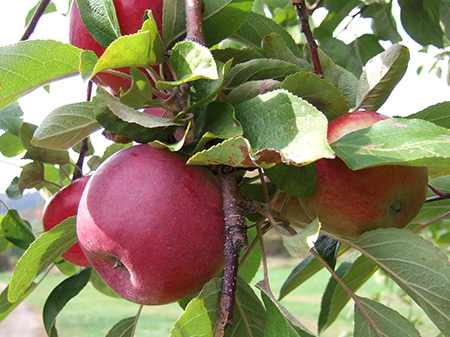
In the southern regions, located in the European part of Russia, according to the period of ripening of fruits, Macintosh is ranked among the autumn varieties. It is zoned in the North Caucasian and Lower Volga regions. In Russia and the countries of the former USSR, this apple tree is better known under other names: Autumn red-sided, Autumn excellent, Autumn Khoroshevka.
The trees are medium-sized, the crown is wide, spreading, not thickened. Skeletal branches diverge to the sides in a cauldron-like manner. Mixed fruiting.
Shoots are of medium thickness. Leaves are light green in color, with a slightly yellowish tinge, medium in size, ovoid in shape, wide, medium pubescent. The edges of the leaves are very even, with a blunt toothed or crenate serration. The surface of the sheet plate is distinguished by an even relief; at its base, a heart-shaped notch is clearly visible. In the conditions of the nursery, the shoots have a dark cherry color and a slightly curved shape. Buds are small, convex, spaced, with a rounded apex. On one-year-olds, small whitish lentils are clearly visible.
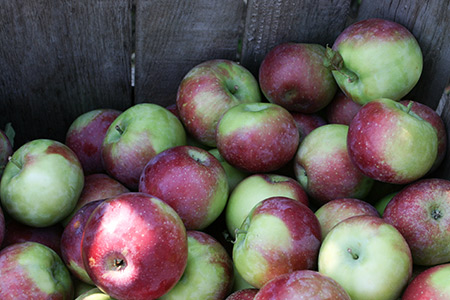
The fruits of the Macintosh apple tree are of medium or large size, the mass of one apple is usually 150 - 180 grams. The main color of the fruit is whitish-yellow or green, the integumentary color is expressed on a significant part of the apple in the form of large blurry stripes of dark purple color, passing over a lighter red background. The shape of the fruit is slightly flattened, slightly conical in the upper part and lobular in the lower part. The peel on the apples is thin, but quite firm and elastic, smooth, shiny, with an intense waxy bloom of a bluish tint, easily separating from the pulp. The subcutaneous points are large, light-colored, distinct, numerous. The funnel is usually small in size, rather wide, and can rarely be flooded. The peduncles are thin, short. The saucer is medium in width and depth, with smooth walls or with slight folds. The calyx is narrow, pointed in shape, directed upward, formed from tightly closed sepals. The seed chambers are small and open wide into the axial cavity, usually located closer to the calyx. Seeds are large in size, sharp in shape, brown in color.

The pulp is white (red streaks are rare), juicy, fine-grained, medium density, very delicate, excellent sweet and sour taste (sourness is pronounced), with a rich candy spice and a bright pleasant aroma. By chemical composition, the fruits contain: sugars (10.7%), titratable acids (0.57%), P-active substances (196 mg / 100 g), ascorbic acid (3.8 mg / 100 g), pectin substances (10.8%). The fruits are intended primarily for fresh consumption. Nevertheless, this variety of apples is often heat treated and harvested for future use. Its fruits are widely used in cooking in the manufacture of various baked goods, applesauce, cider, etc.
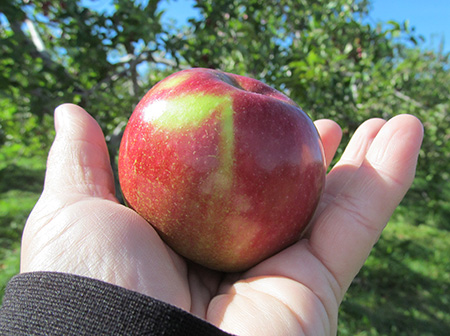
In the conditions of the Oryol and southern regions, fruit ripening occurs in the second half of September. The period of consumer maturity begins 2 to 3 weeks after harvest.When stored in the refrigerator, apples retain their freshness and taste for a long period, up to the end of February - beginning of March.
A variety of medium early maturity. Fruiting of young trees on seed stock begins in 6 - 7 years. The yield is usually average, but annual. However, there are data on obtaining in some years from apple trees growing in the garden of VNIISPK, high yields - up to 390 kg of fruits from one tree.
Average winter hardiness. Scab resistance is weak. In unfavorable years, fruits and leaves are significantly affected by the disease, apples absolutely lose their presentation.
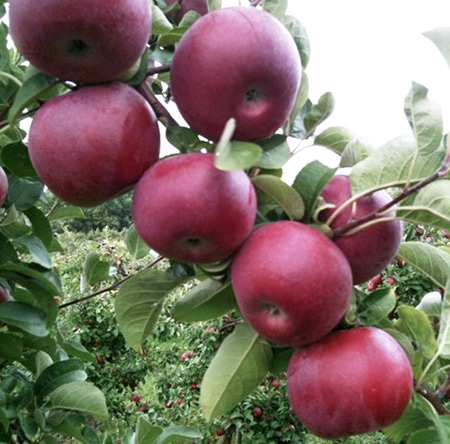
It is worth noting that pure Macintosh trees are found in gardens much less often than its clone - Red Macintosh, in which the cover color occupies the entire surface of the apple. In addition, apple trees with an intermediate type of color are quite often found in the plantings - a striped blush is clearly visible on the shaded side of the fruit.
The main advantages of the apple tree are: excellent commercial and taste characteristics of apples, a high level of transportability and keeping quality of fruits.
The main disadvantages include: insufficiently high level of frost resistance of trees, high susceptibility of fruits and leaves to scab.
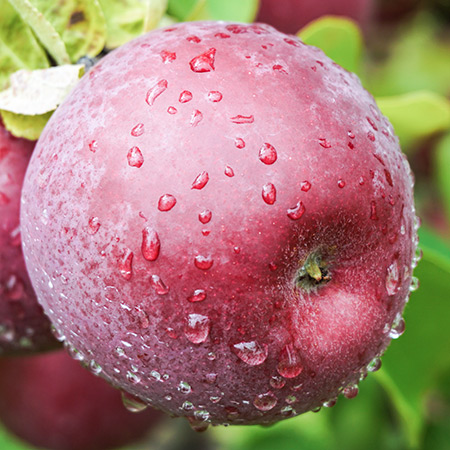
Macintosh was widely used in foreign and domestic breeding work as an initial variety: in total, more than 60 new varieties were obtained, including more than 40 abroad. Of these, the following are especially popular in Russia: Melba, or Melba (selection of the Ottawa Experimental Station (Canada), obtained through free pollination of the Macintosh), Spartan (breeding Summerland Experimental Station (Canada), through crossing the Macintosh with Yellow Newtown), Amazing (bred at the Rossoshan Experimental Fruit and Berry Station by crossing the Macintosh with Renet Simirenko), Olympic (breeding VNIISPK, through free pollination of the Macintosh), Orlik and Orlovskoe striped (breeding VNIISPK, both obtained by crossing Macintosh with Bessemyanka Michurinskaya) Papirovka). The scab-immune Priscilla (Vf gene) of the United States was also developed with input from the Macintosh.


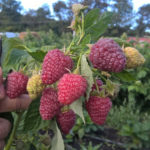
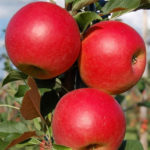
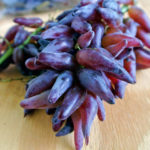




The information is very interesting. Nobody knows where to get a seedling?
Mekintosh is unique, perhaps the best variety that does not need improvement. Very juicy, very sweet. If an apple falls from a tree onto a stone, splashes in all directions, and you bite it (snow-white pulp with pink splashes, with a crunch) - sweet juice on the chin. We grow in the Leningrad region (it does not freeze and does not get wet), and the harvest can be eaten until March (if you carefully remove it from the branches). The peel of the apple is dense, waxy ... so it keeps well. Our apple tree is about 35 years old. I would like to update the planting - but where can I get such seedlings now! I wish I could find a craftsman and plant our favorite variety!
In the u-tube there are detailed videos with the grafting of apple trees, I tried to inoculate myself, it turned out ... I think you will succeed. Good luck!
I have a little left in the pit. I will oculate myself.
Many can grow a seedling from your cuttings.
Will it take root in the Moscow region? Will it stand the frost? Please tell me!
Sergei will probably die in the Moscow region. Perhaps not even right away. I talked in the nursery with people who are engaged. They said that for other areas this grade.
It has been growing in my Ivanovo region for 30 years